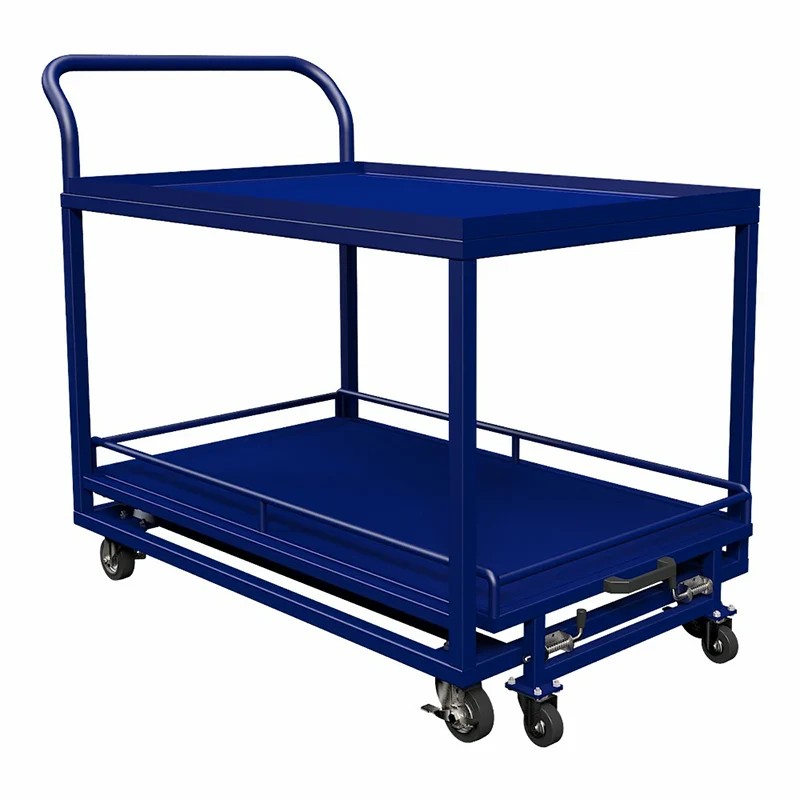 |
In a busy workshop or warehouse, the standard two tier cart on wheels is a workhorse. But its biggest flaw—the inaccessible bottom shelf—is a direct source of financial loss. Every time an operator has to "bend and shove" a heavy part or box into that confined space, it causes micro-damage that adds up. This isn't just an efficiency problem; it's a direct hit to your bottom line through damaged inventory and equipment.
|
The design of a traditional cart forces a horizontal, high-impact motion. An operator can't place an item gently; they must slide, push, and often jam it into the bottom shelf. This repeated collision between the item, the cart frame, and other items is a constant source of preventable damage.
For a B2B distributor, presentation matters. A crushed box or a scratched component is unacceptable. When an operator shoves a box under the top shelf, that frame scrapes the packaging. In a machine shop, finished metal parts are scraped against the steel frame, ruining the finish. This damage leads directly to customer complaints, returns, and write-offs.
Your carts are assets, but this flawed design destroys them. The constant impact from "shoving" items chips the powder-coated finish, exposing the raw steel underneath and leading to rust. It puts undue stress on the frame's welds and can misalign the structure over time, causing wheels to track improperly. You end up replacing your carts far more often than necessary.
The most effective fix is to remove the obstacle itself. A cart with a fully extendable bottom shelf eliminates the "bend and shove" motion. The shelf slides out completely, supported by its own robust track system (often using V-wheels) and auxiliary casters.
This changes the action from a horizontal "shove" to a vertical "place." The operator has open, top-down access. There is no upper frame to collide with. They can place heavy or delicate items gently and precisely, protecting both the product and the cart. This design isn't just about ergonomics; it's an engineering solution to a financial problem.
| Talk With An Expert |
Choosing the right tool for your order picking process is a financial decision. A standard cart is a low-cost item with a high cost of ownership, paid for in damaged goods and frequent replacement. A cart with an accessible slide-out shelf protects your inventory, lasts longer, and empowers your team to work without the friction and damage of a flawed design.
Standard carts force operators to "shove" items horizontally under the top shelf. This causes items (especially packaging) to scrape, dent, or collide with the steel frame, leading to damage.
Yes. These shelves are designed for industrial use, operating on heavy-duty tracks like V-wheels and supported by their own casters. This distributes the load and ensures stability, making them durable for heavy parts.
Absolutely. By changing the motion from a horizontal "shove" to a vertical "place," it stops operators from ramming items into the cart's frame. This protects the paint, prevents dents, and reduces stress on the welds.
The main financial benefit is a lower total cost of ownership. You spend less money on replacing damaged products, handling customer returns, and replacing the carts themselves, which last longer.
Yes. The combination of a low-friction track system and support casters means the shelf slides out smoothly and easily, even when loaded with heavy components, requiring minimal effort from the operator.